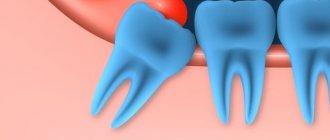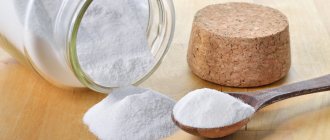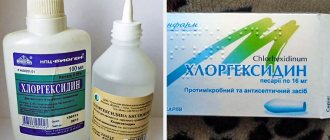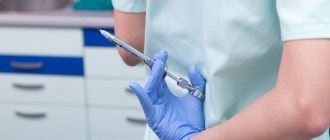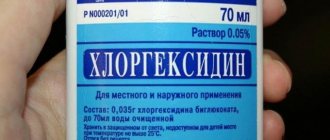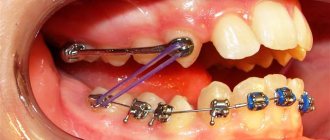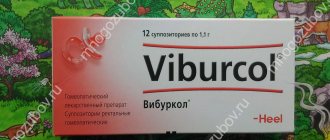The confrontation between people and pathogenic organisms is the oldest and longest in human history. Despite all the achievements of science, viruses remain the most dangerous and unpredictable opponents. Why is it so difficult to defend against them? And when will we finally win? Scientists told the Science channel about this.
Invincible enemy
All infections that we get from animals are called zoonotic. Smallpox was given to us by camels, measles by dogs and wolves, the influenza virus by waterfowl, and HIV by monkeys. Well, the coronavirus responsible for the COVID-19 pandemic came from bats from the horseshoe bat family. Viruses continually mutate as they circulate in the wild. Variability is the main reason why we cannot overcome viruses. But there are others.
First, viruses are the most numerous biological entities on the planet. The total number of all species can reach 1015 - a quadrillion! But out of this gigantic number, we have managed to describe and study only a few thousand species.
Secondly, from an evolutionary point of view, viruses are the most successful parasites on Earth. They infect absolutely all types of living beings. Their goal is to reproduce their genome in the host cells. They never stop in their quest to reproduce.
Thirdly, at any moment the virus can change its “registration”, that is, jump to another host. Man has not learned to resist this phenomenon or even predict it. It is thanks to such “leaps” that all known viral infections came to our population.
Why did COVID-19 become a pandemic, provoking unprecedented quarantine measures? It is one of the most dangerous zoonoses that have recently changed hosts and to which the population has not yet adapted. It is these viruses that provoke outbreaks of the most severe diseases, leading to the death of a large number of people.
“This infection, which came to us quite aggressively from the animal world, will, of course, be with us for a long time. I think that this is not one or two seasons, but, of course, it will be extremely difficult to eliminate it from the human population,” says Doctor of Medical Sciences Lyudmila Tsymbalova, head of the department of vaccinology, head of the influenza vaccine laboratory, advisor, about COVID-19. Director of the Research Institute of Influenza named after. A. A. Smorodintseva.
Treatment of bacterial stomatitis in children
For treatment, oxolinic ointment and chlorophyllipt solution are often used.
When healing begins, the wounds are lubricated with rosehip oil, Kalanchoe juice with aloe, propolis, and so on.
Frequent rinsing with furatsilin, chamomile solution, potassium permanganate and even strong tea will help.
Prevention of stomatitis
The following are suitable preventive actions:
- Compliance with established hygiene rules;
- treat your teeth in a timely manner;
- constant washing of hands, toys, dirty objects;
- teeth cleaning;
- regularly visit your child's dentist;
- hardening;
- a diet that involves eating without sugar;
- frequent walks in the fresh air.
The main thing is to see a professional dentist and find out the type of disease, the causes, and get the most accurate recommendations for treatment.
Share:
All hopes for immunity?
The weapon against viruses is the human immune system itself, which over thousands of years has undergone natural selection for resistance to various infections. However, in the case of the SARS-CoV-2 coronavirus (the causative agent of the COVID-19 pandemic), something unpredictable happened. Human immunity sometimes works too hard, and a cytokine storm occurs - one of the most dangerous and sometimes fatal complications of coronavirus infection. This happens when SARS-CoV-2 interferes with cytokines, the signaling molecules that first trigger an immune response. It stops their synthesis at the initial stage of infection, and then greatly accelerates it, which leads to an overabundance of certain signaling molecules, such as interleukin-6.
“The entire immune response becomes unbalanced. The cells don’t understand what to do: they all start working and secrete these cytokines. Then the immune system stops working,” explains the mechanism of the cytokine storm, Doctor of Biological Sciences Vitaly Zverev, head of the Department of Microbiology, Virology and Immunology of Sechenov University, Academician of the Russian Academy of Sciences.
The topic of immunity to COVID-19 has been hotly debated since WHO declared a pandemic on March 11, 2021. Scientists and doctors hoped that those who had recovered would receive strong and long-lasting protection from the virus. However, the first data on the antibody levels of recovered people, which came from China, showed that expectations are far from reality. It turned out that in the case of the SARS-CoV-2 virus, the classical antibody response pattern is disrupted. The high level of type G antibodies in those who recover soon decreases. This trend was described by scientists from King's College London. They studied 65 Englishmen. Each of them had a high level of neutralizing antibodies in their blood at the time of recovery, but after three months it decreased critically.
“The levels of antibodies that are present in most people after a natural infection are not very high and do not even reach the level that will allow them to move into the category of protected people if they are attacked by a new infection,” notes Doctor of Biological Sciences Ancha Baranova, professor at the school in Systems Biology, George Mason University, USA.
According to Vitaly Zverev, the presence of antibodies does not guarantee protection against the disease: “Let’s take HIV infection. Full of antibodies. To all viral proteins. But none of these antibodies neutralize the virus. A person is a carrier of the virus for life, but antibodies only indicate infection and do not affect immunity in any way.”
To date, scientists do not know what titer of antibodies is needed for them to be protective. However, antibodies are just the tip of the iceberg. More accurate information about the presence of immunity to the disease, according to scientists, will be provided by “memory cells,” or so-called T-cell immunity. Its diagnosis is extremely difficult. It is carried out only in scientific laboratories using rather expensive equipment.
Experience with the previous coronavirus from China, SARS, gives scientists reason for cautious optimism. Those who have recovered from the disease have a fairly long-lasting T-cell immunity—8–11 years after the disease, they are still protected. “We, of course, have a very short observation period [with SARS-CoV-2]. The fact that the level of antibodies in the blood drops quite quickly does not mean that a person loses immunity. He still has T-cell immunity,” notes Lyudmila Tsymbalova.
Judging by the work that scientists have already done in China, America and Sweden, T cells are indeed found in many people who have recovered from COVID-19. And even in those who suffered the infection asymptomatically. However, not all scientists see a connection between the presence of T cells in the blood and the presence of acquired immunity from coronavirus. “We have no data that cells awaken and begin to synthesize a high level of antibodies for the secondary challenge (second wave. - Ed.). We are waiting for them to appear. When? When people find themselves in a situation of a second challenge with the same virus,” says Ancha Baranova.
By the way, experts give a positive forecast about the second wave: it is unlikely to surpass the first. And the COVID-19 disease itself is not as dangerous as it seemed at the beginning of the pandemic. Mortality rates were recalculated in July 2021 by scientists from Imperial College London: from an alarming 5-7% they dropped to 0.4-2% in different parts of the planet.
"Blue" against COVID-19
Amid the pandemic, almost all scientific work was paralyzed, but not medical work. Doctors around the world were looking for cures and formulating treatment regimens. They were often forced to experiment, fortunately the WHO allowed the use of drugs created to treat other diseases.
“It was a gesture of despair! It was necessary to find at least some medicine that would help. The recommendations included drugs that were originally developed for the treatment of influenza, hepatitis C, and immunosuppressive conditions. The full-cycle development of a drug to treat this particular virus will take too long. We simply won’t have time to save patients who need help,” explains the haste of Candidate of Biological Sciences Anna Stro, head of the laboratory of chemotherapy of viral infections at the Influenza Research Institute. A. A. Smorodintseva.
The search for effective drugs against SARS-CoV-2 among known medical drugs has led to unexpected scientific discoveries. It turned out that a simple “blue” can destroy the new coronavirus in the human body: a methylene dye solution! Specialists from the Institute of Cluster Oncology named after L.L. Levshin of Sechenov University decided to try this old and cheap remedy from the “first aid kit” of oncologists, after they began to receive patients with coronavirus infection. Know-how? Not really.
“We just remembered... Domestic scientists used methylene blue to inactivate the virus that causes bird flu. “We decided to start studying this problem,” said one of the authors of the treatment method, Candidate of Medical Sciences Artem Shiryaev, surgeon, oncologist at the Institute of Cluster Oncology named after L.L. Levshin of Sechenov University. — Then articles by Chinese scientists appeared that methylene blue is good at inactivating the new coronavirus. And we, in fact, started trying this on volunteers. We were the first volunteers.”
Important: don’t rush to drink the “blue”! It is not safe! And it’s not just her. Methylene blue belongs to the group of photosensitizers. These are photosensitive substances whose effects are enhanced when exposed to light of a certain wavelength. This property has made it possible to successfully use them in photodynamic therapy for the treatment of various types of oncology.
“When irradiated with red light with a wavelength of 650 mm, a photodynamic reaction occurs: the molecular oxygen present transforms into its singlet state. This is a very active state: proteins that are nearby are destroyed,” explains one of the authors of the method, Doctor of Physical and Mathematical Sciences Viktor Loschenov, professor at the Institute of General Physics. A. M. Prokhorov RAS. “The same thing happens with cancer cells. They are killed by light and molecular oxygen, which goes into the singlet state when light is absorbed by this photosensitizer.”
Photo: Juan Mabromata/AFP/East News
On April 22, 2021, the institute was repurposed for COVID-19, and on April 24, an application to conduct a clinical trial on humans, sent to the local ethics committee of Sechenov University, was already approved. The next day, in addition to the standard treatment regimen approved by the Russian Ministry of Health, patients were asked to try an experimental one using methylene blue.
The clinical experiment itself was conducted from April 25 to May 24, 2020. It involved 43 patients with a confirmed diagnosis of COVID-19 and with varying degrees of lung damage. And also 39 volunteers: doctors who worked in the “red zone”, adult members of their families, scientists who participated in the development of the study. None of them became infected with coronavirus during the experiment, and all patients were successfully cured!
“When patients came with a positive PCR test for coronavirus, we offered this treatment method through the inhalation of methylene blue and laser irradiation of the oropharynx and nasal cavity. The next day we took a swab from these patients: a PCR test. And in all the patients to whom we performed this type of treatment to eradicate this virus, we received a negative result the next day. That is, eradication of the virus in these patients was 100% within 24 hours!” - says Artem Shiryaev.
Since the 19th century, blue has been used to treat malaria, psychosis, bipolar and neurodegenerative disorders. Works as an antidote for poisoning by cyanide, carbon monoxide and hydrogen sulfide. It has proven disinfectant, anti-inflammatory and even antiviral properties. So the development of Russian oncologists had a scientific basis. However, they are very cautious in their conclusions. “We have no right to talk about any effect yet, because only the first tests have been made. A certain result was recorded on volunteers. Let’s be very careful and for now we will say that yes, there is a reason for in-depth research,” says Doctor of Medical Sciences Igor Reshetov, Director of the Institute of Cluster Oncology named after L.L. Levshin.
The scientists applied for a grant. If they win, they plan to spend the money on organizing a joint study with the Research Institute of Medical Primatology in Sochi to first study the antiviral effects of methylene blue on the immune system of monkeys. If this method of prevention works, the vaccine may also be obsolete.
Use in pediatric practice
Unlike adults, treatment of blue stomatitis in children is somewhat different. During the treatment of a child, you should not treat wounds with the drug very often. The procedure should be carried out no more than 4 times a day after meals.
In the event that stomatitis is caused by herpes, treatment is carried out no more than 5 times a day. Only an aqueous solution is allowed to be used on mucous membranes.
If stomatitis is observed in an infant, blue must be applied to the nipples of the nursing mother. This method is used to avoid injury to the baby’s mucous membrane with cotton swabs, tampons or bandages.
Not all blue - what else can be used to treat stomatitis:
Vaccine battle
According to WHO, about 200 coronavirus vaccines are being developed around the world. On August 11, the Russian Ministry of Health registered the world’s first drug for the prevention of coronavirus infection - Sputnik V. Never before have scientists been able to create a vaccine against a new disease so quickly! Will it be effective and safe? This is perhaps one of the most hotly debated issues in the medical community.
“Yes, there is no such world experience that a new infection can receive a vaccine in six months. Is there a chance you'll get lucky? Eat. Epidemiology is the science of chance. These are the degrees of risk. How big is your chance of this happening? Small. But does this mean that you shouldn’t do it? Probably not. The question of whether it will protect is absolutely open,” says Doctor of Medical Sciences Mikhail Favorov, an infectious diseases physician, an international expert in the field of public health, epidemiology and laboratory diagnostics.
Despite all the concerns and questions about the drugs being developed, many scientists believe that the 2021 vaccine race is truly an unprecedented event. For the first time, humanity is trying to defeat the virus and stop the pandemic. It has already come much closer to solving this problem than all scientists and doctors in previous centuries.
Read more about this in the film of the “Science” channel.
Contraindications for use
Even the most harmless remedy may have its contraindications. The instructions describe factors that prevent the use of the solution in question.
The drug should not be used by patients who have an individual intolerance to the active substance of the drug. It is expressed in headaches, general psychological discomfort, and allergic reactions.
The use of the solution during pregnancy and lactation is not recommended. The drug can be used in the treatment of infants only after consultation with a specialist.
